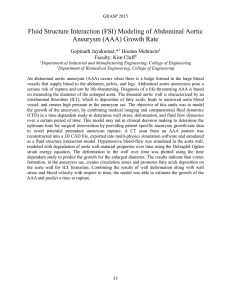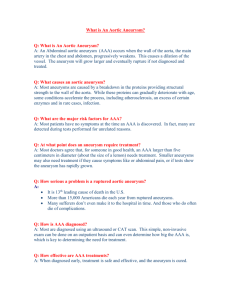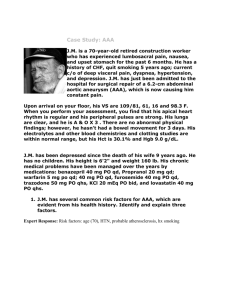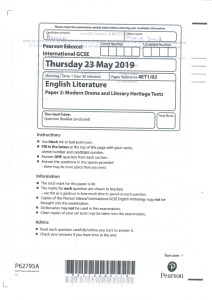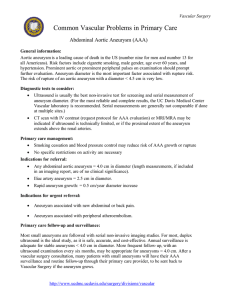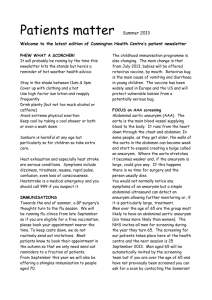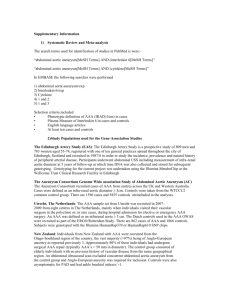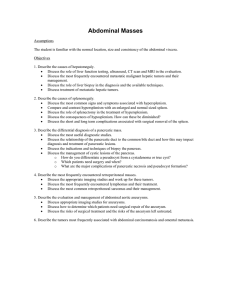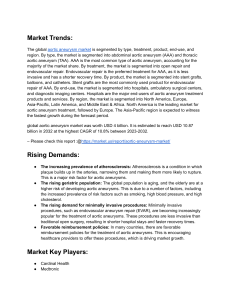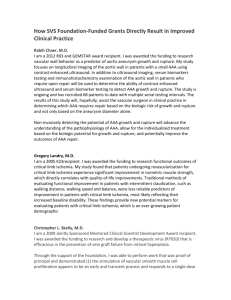recent advances in the treatment of abdominal aortic aneurysm: role
advertisement
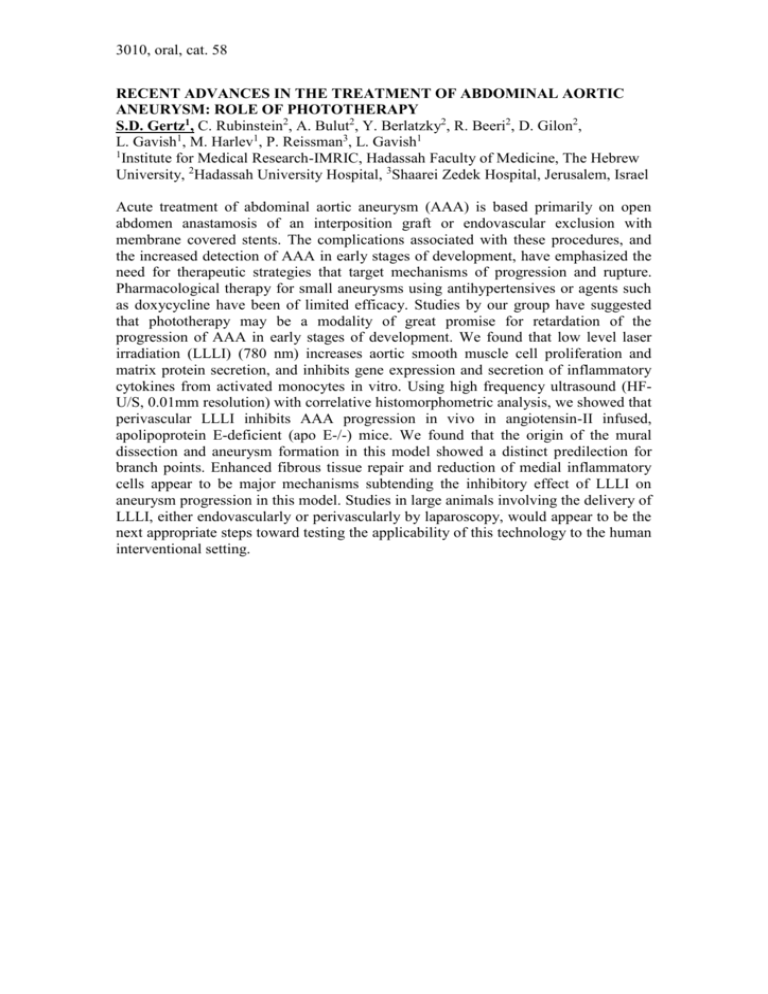
3010, oral, cat. 58 RECENT ADVANCES IN THE TREATMENT OF ABDOMINAL AORTIC ANEURYSM: ROLE OF PHOTOTHERAPY S.D. Gertz1, C. Rubinstein2, A. Bulut2, Y. Berlatzky2, R. Beeri2, D. Gilon2, L. Gavish1, M. Harlev1, P. Reissman3, L. Gavish1 1 Institute for Medical Research-IMRIC, Hadassah Faculty of Medicine, The Hebrew University, 2Hadassah University Hospital, 3Shaarei Zedek Hospital, Jerusalem, Israel Acute treatment of abdominal aortic aneurysm (AAA) is based primarily on open abdomen anastamosis of an interposition graft or endovascular exclusion with membrane covered stents. The complications associated with these procedures, and the increased detection of AAA in early stages of development, have emphasized the need for therapeutic strategies that target mechanisms of progression and rupture. Pharmacological therapy for small aneurysms using antihypertensives or agents such as doxycycline have been of limited efficacy. Studies by our group have suggested that phototherapy may be a modality of great promise for retardation of the progression of AAA in early stages of development. We found that low level laser irradiation (LLLI) (780 nm) increases aortic smooth muscle cell proliferation and matrix protein secretion, and inhibits gene expression and secretion of inflammatory cytokines from activated monocytes in vitro. Using high frequency ultrasound (HFU/S, 0.01mm resolution) with correlative histomorphometric analysis, we showed that perivascular LLLI inhibits AAA progression in vivo in angiotensin-II infused, apolipoprotein E-deficient (apo E-/-) mice. We found that the origin of the mural dissection and aneurysm formation in this model showed a distinct predilection for branch points. Enhanced fibrous tissue repair and reduction of medial inflammatory cells appear to be major mechanisms subtending the inhibitory effect of LLLI on aneurysm progression in this model. Studies in large animals involving the delivery of LLLI, either endovascularly or perivascularly by laparoscopy, would appear to be the next appropriate steps toward testing the applicability of this technology to the human interventional setting.
